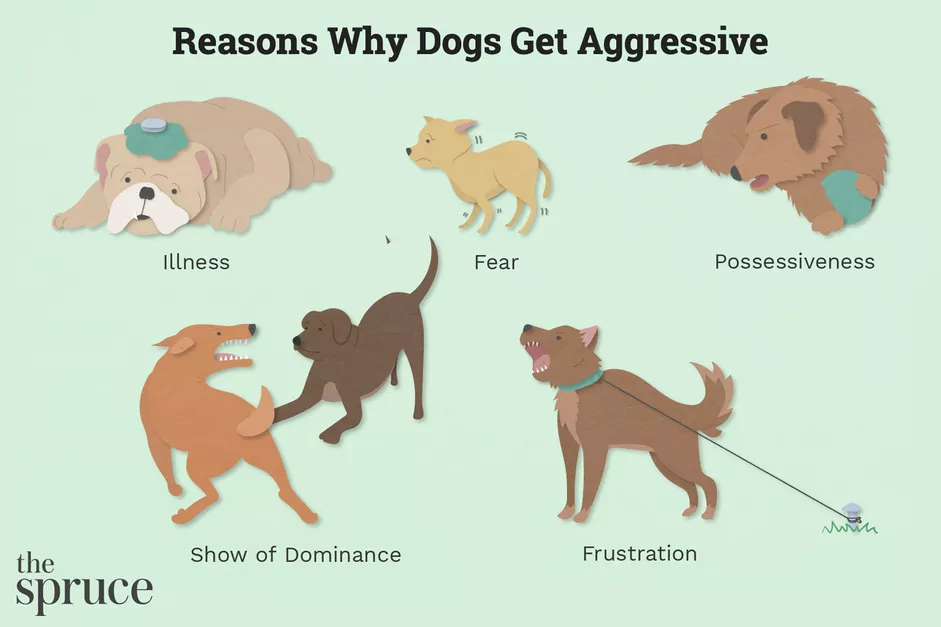D In Dogs Stands For ‘Dost’, Not ‘Dangerous’
I was around 11 or 12 years old, when I had a bad run in with a pack of 5-6 dogs. As I walked past them, they started barking at me. By the time I looked back to see what was happening, they had already started chasing me. Without second thoughts I ran from them as fast as I could. They chased me for a while and ultimately walked away. I was relieved. This bitter experience made me afraid of dogs.
That incident led me to believe that dogs are very dangerous. My little brother also believed that dogs are dangerous, even without experiencing it.
After about month, I noticed a litter of puppies in that area, and it immediately occurred to me that the dogs were just trying to protect their new-born puppies. On thinking back, I realized that on the day of the dogs’ attack, I had casually been playing with a stone in my hand which could possibly be the reason for those gentle creatures to attack as they saw me as a threat. From then on, I started looking at dogs with a kinder attitude. When I approached that same group of dogs in a friendly manner (though cautiously so that I do not alarm them), they were the cutest and playful dogs I had ever met.
One can conclude that dogs behave aggressively only when they have a reason to do so. Usually, when their primal instincts, like that listed below are treaded upon, their external triggers are incited and aggravated. Their primal instincts include:

- Being territorial by nature
- Fear of being harmed
- Protectiveness of puppies & their space
- Frustration (by being caged/chained)
- Assertion of Dominance
- Pain because of injury, hurt, etc.
Fortunately, these behaviours can be appropriately dealt with as described below:
- Being Territorial by Nature: The area where a dog resides is called its territory. It is like its own personal space. Invasion in one’s territory and personal space is disliked by animals and humans alike. When a stranger tries to get in our house, we act immediately. Similarly, dogs also do something about it like barking, chasing, or biting in the worst-case scenario.
So how can we deal with it? The answer is rather simple, if you are walking by and suddenly a dog starts barking at you and you feel like you have invaded their personal space, stay calm, avoid eye contact, and move away from their space as calmly and slowly as possible.
- Fear Of Being Harmed: Many street dogs go through abuse and traumatic experiences like being stoned, hot water thrown on them, etc. which makes them extremely vary of human beings. Hence, approaching a random dog suddenly is not in your best interest. But in case it happens by mistake, stand completely still; make yourself rigid and motionless. The dog will understand that you mean no harm and move away.
- Protectiveness Of Puppies & Their Space: It is an innate response of a mother of any species to protect her young ones. It also goes with mother dogs. As I narrated through my experience, it is highly suggested not to go too close to a mother dog, especially the one that has just delivered. In a bid to protect her puppies, she can be provoked very easily and can get very aggressive. Hence, just walk away with a normal body language with no sudden movements.
- Frustration (by being caged/chained): One can feel this frustration by just imagining being locked up in a room for a long time. In fact, more recently people felt terribly frustrated during the Covid lockdown when they were unable to move out of their homes. Similarly, dogs become extremely frustrated if they are confined to cages or are kept chained. Dogs need to be walked and even in the house they need to move around freely. Besides training, they need to be loved and cared for and all this would keep their aggression under control.
- Assertion of Dominance: Dogs are pack animals and their behaviour to dominate is ingrained in their territorial instincts. When this behaviour displayed in a domestic environment it can develop into an unwanted behaviour leading to dangerous aggression. Dog Training can help stop that behaviour from progressing.
- Pain because of injury, hurt, etc.: Dogs also feel pain as much as we do. Common signs of pain in dogs include low posture, shallow breathing, grumpiness, panting, crying, excessive licking the specific area, lack of enthusiasm to play, reduced movement, loss of appetite, flattened ears, tail tucked in, etc. During this time, they are extremely irritable and can get aggressive all of a sudden. The best way to deal with them during this time is to be give medical attention, keep a careful watch on them and take care not to aggravate them.
The behaviour of all the animals, including dogs is not always predictable on every occasion. A dog may not show any signs of aggression and then go on to bite you; but this is a rare occasion. It’s a good idea to be cautious with them especially when one does not know them. By understanding their behaviour and following the above steps, we can calm their aggressiveness and prevent unforeseen events.

Writer: Dev Patel is a Zoology student. His fascination for animals started when he was little. He tries to understand the behaviour of animals and also helps other in understanding the same.